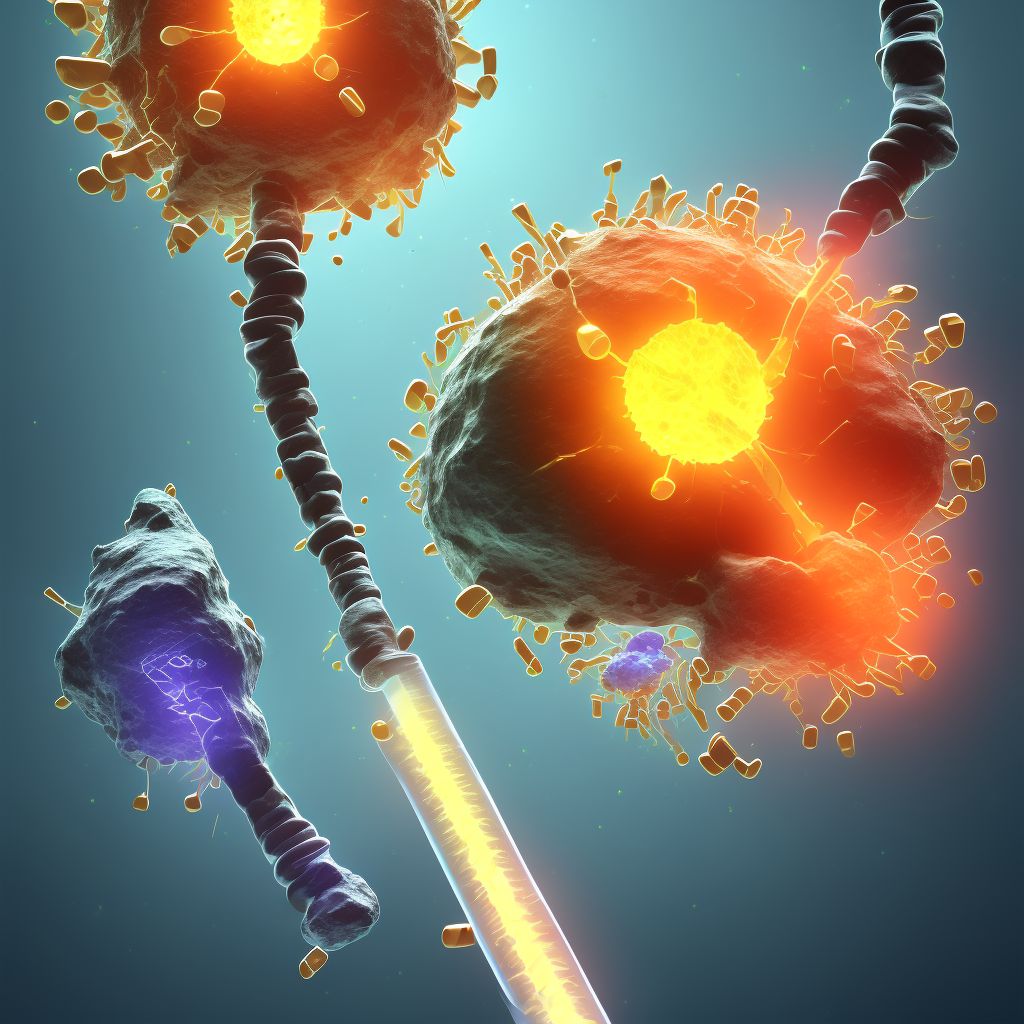
Nondisplaced comminuted fracture of shaft of unspecified tibia, subsequent encounter for open fracture type IIIA, IIIB, or IIIC with nonunion Save
ICD-10 code: S82.256N
Disease category: S82.256: Nondisplaced comminuted fracture of shaft of unspecified tibia
Nondisplaced Comminuted Fracture of Shaft of Unspecified Tibia: Understanding the Condition
A nondisplaced comminuted fracture of the shaft of the unspecified tibia refers to a specific type of bone injury in which the tibia, or shinbone, is broken into several pieces without any significant displacement. This condition may occur due to various reasons, such as falls, sports injuries, or accidents.
When the fracture occurs, it is crucial to seek immediate medical attention to prevent further damage and complications. The subsequent encounter for an open fracture type IIIA, IIIB, or IIIC with nonunion means that the fracture resulted in an open wound, and the healing process has not progressed as expected. This condition is categorized based on the severity of the wound and the level of contamination.
Fractures of the tibia can be complex and require a comprehensive assessment by a healthcare professional. During diagnosis, medical imaging techniques, such as X-rays or CT scans, are utilized to determine the extent and severity of the fracture.
- Nondisplaced fracture: In this type of fracture, the broken pieces of the tibia remain aligned and in their original position.
- Comminuted fracture: Comminuted fractures involve the tibia breaking into multiple pieces, which can make treatment and healing more challenging.
- Open fracture: An open fracture refers to a condition where the broken bone protrudes through the skin, increasing the risk of infection and complicating the healing process.
- Nonunion: Nonunion occurs when the fractured bone fails to heal within the expected timeframe, leading to a persistent gap between the broken fragments.
It is essential to understand that proper medical treatment is crucial for the management of this condition. However, it's important to note that in this article, we will not discuss specific treatment options.
If you or someone you know has experienced a nondisplaced comminuted fracture of the shaft of the unspecified tibia with subsequent open fracture type IIIA, IIIB, or IIIC with nonunion, it is vital to consult with a healthcare professional who can provide appropriate guidance and treatment options tailored to your specific condition.
Remember, early intervention and proper care are essential for a successful recovery from this type of fracture.
Treatment of Nondisplaced comminuted fracture of shaft of unspecified tibia, subsequent encounter for open fracture type IIIA, IIIB, or IIIC with nonunion:
Treatment Options for Nondisplaced Comminuted Fracture of the Shaft of the Unspecified Tibia with Nonunion
Dealing with a nondisplaced comminuted fracture of the shaft of the unspecified tibia can be challenging. However, with the right treatment options, you can regain your mobility and improve your quality of life. In this article, we will explore the various treatment options av...
To see full information about treatment please Sign up or Log in